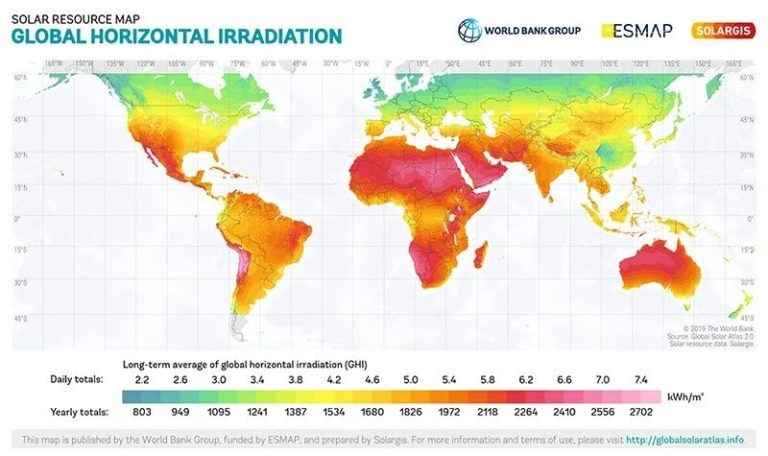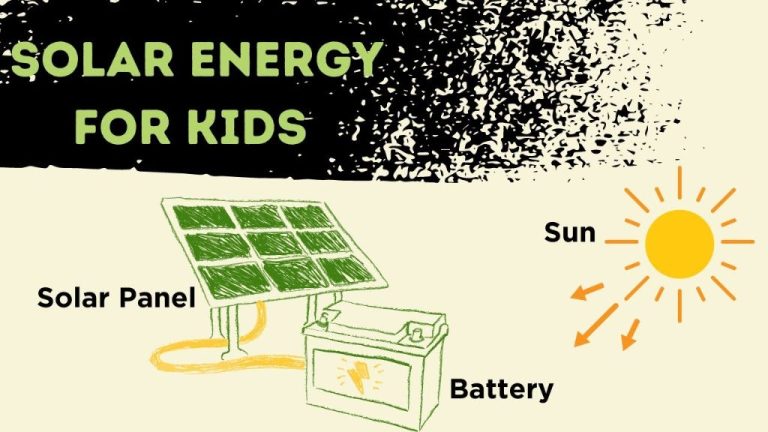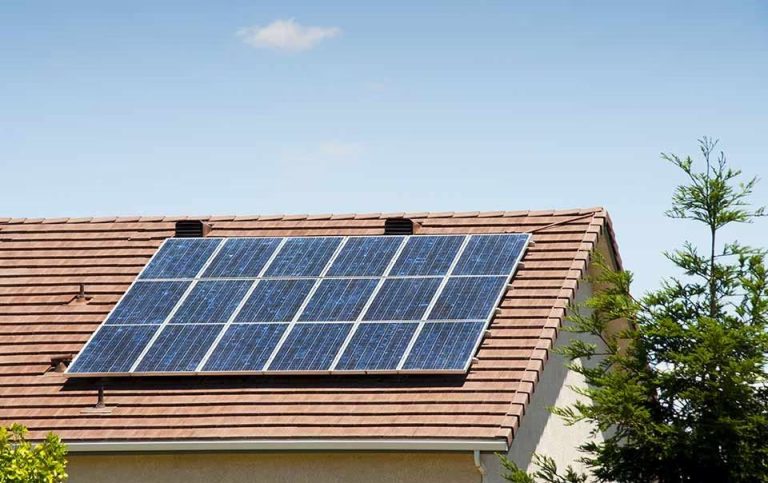What Is Solar Energy Potential?
Solar energy is the radiant light and heat from the sun that is harnessed using a range of technologies such as solar heating, photovoltaics, solar thermal energy, solar architecture, and artificial photosynthesis. It is an important source of renewable energy and its technologies are broadly characterized as either passive or active depending on how they capture and distribute solar energy.
The development of solar energy technologies is critical in the fight against climate change and the transition away from fossil fuels. Solar energy is abundant, inexhaustible, and cleaner than conventional energy sources. It offers a promising solution to the world’s growing energy demands while reducing dependence on unsustainable coal, oil, and natural gas. Harnessing solar energy could play a major role in cutting greenhouse gas emissions and preventing dangerous global warming.
This article will examine the potential of solar energy, the different technologies involved, the growth projections and challenges, regional solar potential, and the overall impact this renewable resource could have on the world’s energy future.
Solar Irradiance
Solar irradiance refers to the amount of solar power received on a given surface area over a certain timeframe. It is measured in kilowatts per square meter (kW/m2). The solar irradiance that reaches the Earth’s atmosphere is about 1,366 watts per square meter. However, by the time this light reaches the Earth’s surface, it has been reduced to 1,000 watts per square meter on a clear day.
Solar irradiance can vary greatly depending on location. Areas closer to the equator generally receive more direct irradiance from the sun. For example, the southwestern United States averages 6 kWh/m2/day while Germany only averages 3.4 kWh/m2/day. Seasons also impact irradiance, with summer months receiving the most intense sunlight. Geographic features like mountains and bodies of water can also affect irradiance by blocking or reflecting sunlight.
Understanding solar irradiance is important for estimating the potential of solar energy in a given region. Higher irradiance means solar panels and concentrated solar plants will produce more electricity. While sunlight reaches the entire planet, areas with consistently high irradiance levels have the greatest potential to effectively utilize solar power.
Photovoltaic Solar Energy
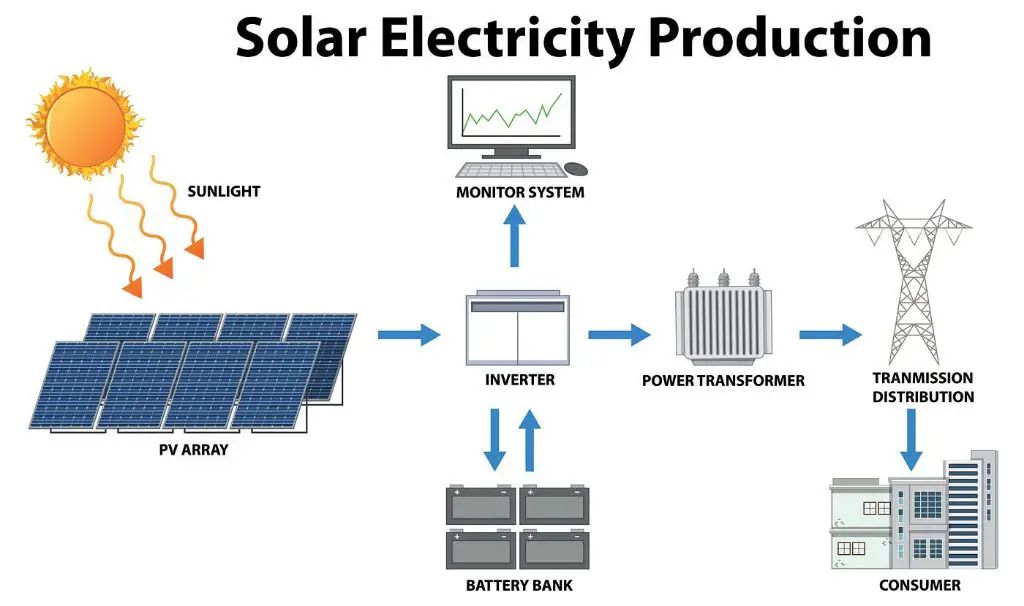
Photovoltaic (PV) solar panels, also known as solar cells, convert sunlight directly into electricity through the photovoltaic effect. PV cells are typically made of silicon and contain one or two layers of semiconducting material. When sunlight hits the solar cell, the absorbed photons excite electrons in the cell, causing them to break free from their atoms. This generates an electric current as the electrons flow through the PV cell’s circuit.
The conversion efficiency of a PV cell refers to how much of the sun’s energy striking the panel is converted into usable electricity. Most residential and commercial PV panels on the market today have efficiencies between 15-22%. Research labs have produced PV cells with over 40% efficiency in controlled conditions, though these have not yet been commercially produced at scale. There is still room for improvement in PV efficiency through new materials and manufacturing techniques.
Higher solar cell efficiency leads to more electricity generation per unit area, reducing the number of panels needed. So increasing PV efficiency can lower solar system costs as well as maximizing energy yield over a given space. Efficiency improvements also aid the scalability and competitiveness of solar against conventional power sources.
Concentrated Solar Power
Concentrated solar power (CSP) is a solar energy technology that uses mirrors or lenses to concentrate sunlight and convert it into high temperatures to generate electricity. CSP plants use mirrors to reflect and concentrate sunlight onto receivers that collect and convert the solar energy into heat. This thermal energy is then used to drive a steam turbine or heat engine that creates electricity.
The main advantage of CSP compared to photovoltaic solar panels is the ability to readily store the thermal energy and use it to generate electricity when needed, including during times without sunlight. CSP can utilize thermal storage reservoirs to store excess heat for later use. The primary disadvantages are CSP’s higher costs and greater land use requirements. CSP needs direct sunlight to operate efficiently, while PV can operate in diffused sunlight conditions.
CSP technologies allow for thermal energy storage, providing the flexibility to shift electricity production to meet demand. This gives CSP an advantage over PV in grid energy solutions. However, PV costs have fallen sharply in recent years, making CSP less competitive in some markets. Overall, CSP and PV are complementary solar technologies that both play important roles in transitioning away from fossil fuels.
Solar Potential by Region
The solar potential of a region depends on how much solar irradiation it receives. Solar irradiation is a measure of the amount of solar energy received at a location over a period of time. It varies by geography due to differences in latitude, cloud cover, and weather patterns.
In the United States, the Southwest region has the highest solar potential, receiving around 6-8 kWh/m2/day of solar irradiation. States like California, Nevada, Utah, Arizona, New Mexico have abundant solar resources. This map from NREL shows the annual average daily total solar resource across the US:
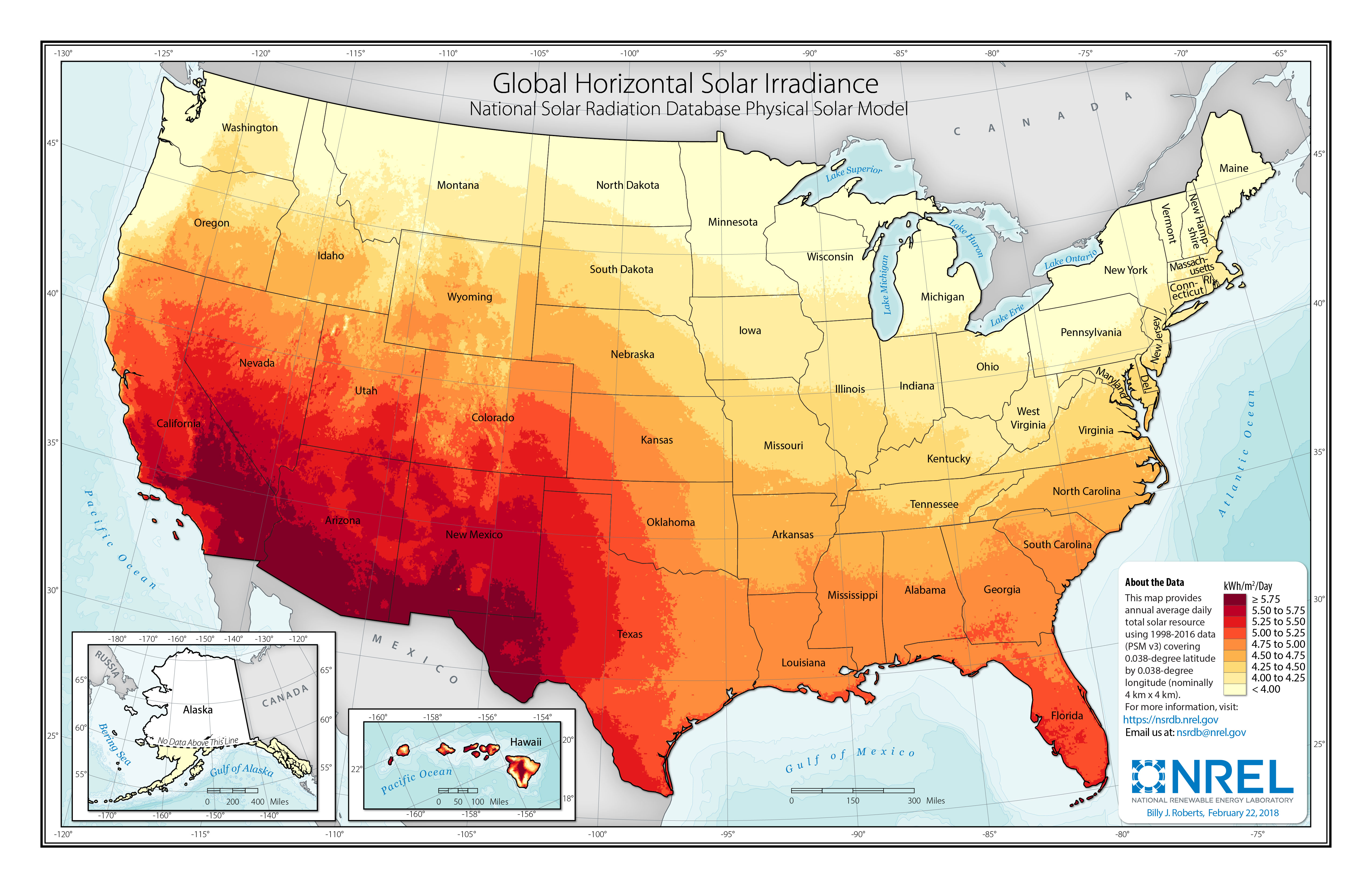
Parts of the Southeast region also have good solar potential. Florida receives about 5-6 kWh/m2/day of solar irradiation. Hawaii also has excellent solar resources due to its low latitude and sunny climate.
Globally, the highest solar potential is found near the equator where solar irradiation is most intense. Countries like Saudi Arabia, Australia, India, Mexico, Brazil, United Arab Emirates, and Chile have the highest solar potential in the world. Northern countries like Canada and Russia have lower solar potential due to their higher latitudes.
Understanding the solar potential of different regions helps governments, businesses, and homeowners determine where to invest in solar energy projects and adopt solar power on a large scale.
Projected Growth
Many countries and organizations have set ambitious targets for solar energy growth over the next few decades. For example, the International Energy Agency (IEA) projects that solar photovoltaic capacity could reach over 4,500 gigawatts globally by 2050 under their Sustainable Development Scenario. This would make solar PV the largest source of power generation worldwide.
The IEA also estimates that concentrating solar power capacity could grow from under 6 gigawatts today to over 300 gigawatts by 2050. Countries like India aim to install 100 gigawatts of solar capacity by 2022 as part of their Paris Agreement commitments. The United States projects over 200 gigawatts of total solar capacity by 2050 based on current state-level policies and targets.
These growth projections indicate a potential ten-fold increase in solar capacity globally within the next few decades. With costs continuing to fall and solar technology improving, many experts believe these growth targets are achievable if the right policies, investments, and political will can be sustained worldwide.
Challenges
While solar energy holds great potential, there are some key challenges that need to be addressed for its large-scale adoption and utilization:
Intermittent Generation
Solar energy generation is intermittent – it varies based on the time of day, weather conditions, and seasons. Solar only generates energy when the sun is shining, so it doesn’t provide constant power output. This intermittency can make integrating large amounts of solar onto the electric grid challenging.
Land Use
Utility-scale solar installations require large plots of land to capture enough solar energy. This land use requirement could compete with agriculture, conservation, and development needs. Rooftop solar on homes and buildings helps alleviate land use pressures.
Grid Integration
The variability of solar generation presents technical challenges for integrating it into the electric grid. Upgrading transmission infrastructure, using forecasting tools, implementing smart grid technologies, and developing energy storage solutions can enable higher solar grid penetration.
Solutions
There are various solutions being developed and implemented to address the challenges facing large-scale solar power adoption. These include:
Energy storage – Solar energy can be stored using batteries or other storage technologies like pumped hydro or compressed air to provide electricity when the sun isn’t shining. Advances in battery storage technology like lithium-ion batteries can store solar energy for use at night and provide stability to the grid.
Transmission infrastructure – New transmission lines, grid connections, and smart grid technology allows solar power to be transmitted from sunny regions to population centers. This allows wider distribution of utility-scale solar power plants.
Solar forecasting – Advanced forecasting of weather and solar irradiance allows grid operators to anticipate variability in solar power generation. This enables better integration of solar onto the electric grid.
Demand response – Shifting electricity demand to match solar generation can better utilize solar power. This involves coordinating energy use among industrial, commercial and residential consumers.
Solar+storage hybrid systems – Combining solar PV or CSP with energy storage provides consistent clean energy. These hybrid systems can replace fossil fuel “peaker” plants to meet energy demand when solar dips.
With such solutions, solar power can play an increasing role in the global energy mix while maintaining grid reliability and stability.
Impact of Increased Solar Adoption
The increased adoption of solar energy can have significant environmental, economic, and social impacts. Here are some of the key effects:
Environmental Impact
Greater use of solar energy can reduce reliance on fossil fuels, which generate greenhouse gas emissions that contribute to climate change. Solar panels generate electricity without emitting carbon dioxide or other pollutants. Widespread solar adoption could help countries meet emissions reduction targets under climate agreements.
Solar energy needs much less water to produce than fossil fuels, so it conserves water resources. This is especially important in arid regions. Solar farms can also be paired with agriculture, providing shading for crops.
Economic Impact
Investing in solar creates jobs in manufacturing, construction, installation, and maintenance. Solar energy can provide electricity at a fixed, predictable cost over a system’s lifetime, insulating consumers from fuel price volatility.
Decentralized rooftop solar also reduces the need for expensive transmission infrastructure upgrades to bring electricity from centralized power plants.
Social Impact
Expanded access to solar energy can improve quality of life by providing modern electric services to rural or underserved communities. Solar mini-grids are powering schools, clinics, and businesses off-grid.
Democratized rooftop solar gives homeowners and communities control over their energy supply and fate. It allows them to become prosumers who both produce and consume energy.
Conclusion
The potential of solar energy is truly remarkable. With abundant sunlight across many parts of the world, solar power represents a clean, renewable energy source that can help combat climate change and meet rising energy demands. Solar technology has improved dramatically in efficiency and affordability in recent years, making it more viable than ever before.
However, some key challenges remain such as the intermittency of solar resources and the upfront costs of installation. Nevertheless, with supportive policies, technological advances, and falling prices, the future is bright for solar to supply a substantial share of global electricity generation within the coming decades.
With smart investments in solar and effective policies, nations can tap into this vast renewable resource and transform their energy systems to be more sustainable. The environmental and economic benefits of scaling up solar power make it an extremely promising solution for securing our energy future while fighting climate change.



